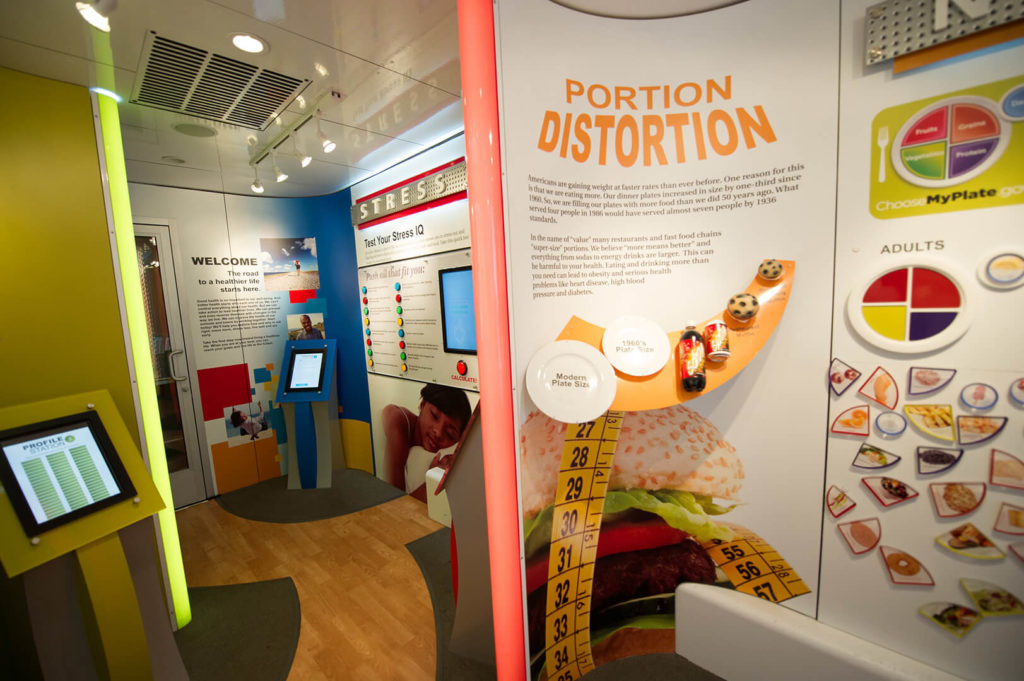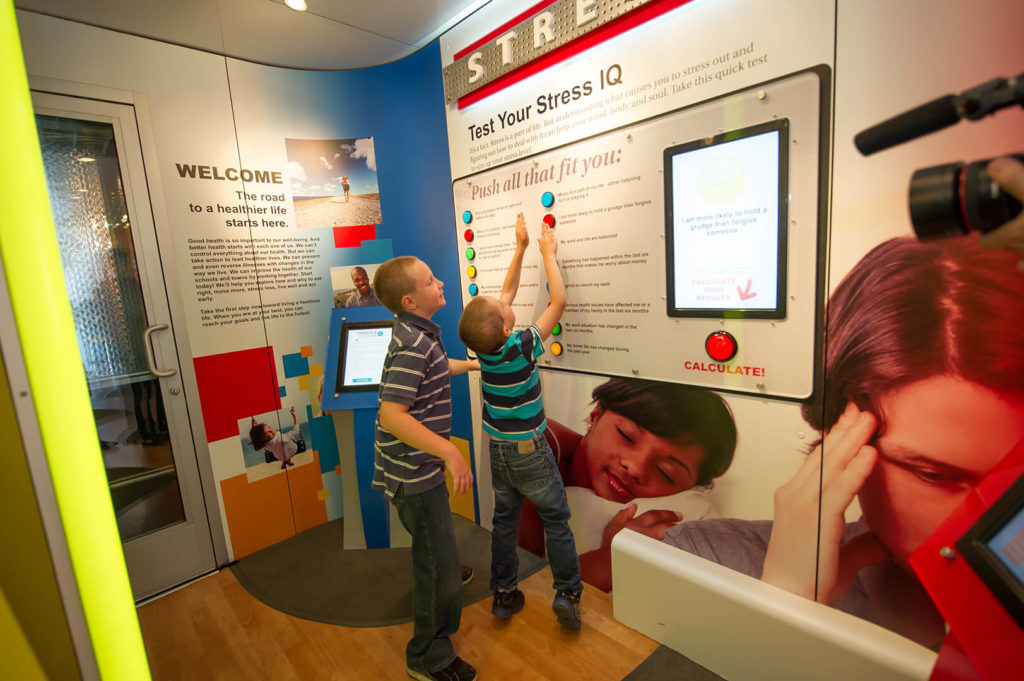
Let’s be honest for a moment — “visual products,” which we pride ourselves on providing, is a really big category. It’s hard sometimes to know what exactly it includes. Just look at our portfolio page: it has projects ranging from one-of-a-kind board games to wall graphics to parade floats to company museums to…well, you get the picture. Clearly, we like variety.
But, while every project is unique in the details, there are some kinds of projects that we’ve done multiple times. They’re solutions that have proven themselves useful multiple times to meet the needs of our customers. You might even say they’re our Signature Solutions.
We’ll be talking about some of these solutions in an occasional blog series. You’ll get a behind-the-scenes look at some of our coolest projects and the work and thought behind them. And hopefully, you’ll get a clearer idea of what “visual products” can be.
Ready? Here we go. We’re kicking this series off with some really “moving” projects: the mobile exhibit trailers.
Mobile. Exhibit. Trailer. What’s in a name?
First, though, what’s the key part of that description? Mobile, or exhibit? Ok, so there probably isn’t actually one right answer, but we’d cast our vote for “mobile.” The “mobile” part is what makes these trailers so useful. They’re equipped to seek out an audience for their exhibits, rather than wait for an audience to show up.
Think of them as the Johnny Appleseed of exhibits: they head out into the world to scatter their (metaphorical) seeds (of knowledge) far and wide. That’s probably why they’re a favorite tool among groups who have an important message that they want to spread to as many people as possible. Like two of our customers, the Barckholtz Group and the Genesee County Farm Bureau.
A “Trail” to Health

The mobile exhibit trailer we built for Barckholtz and its client, a health insurance group, definitely has an important mission: improving and maybe even saving lives by educating folks about nutrition, stress management, and healthy lifestyles.Such a serious topic might sound dry, but Barckholtz didn’t see any reason it had to be that way. They wanted their mobile exhibit trailer to be a fun, engaging experience for kids and adults alike. So we covered the trailer inside and out with bright colors and photos. Moreover, we made a point of including interactive elements like touchscreens or mix-and-match tiles that illustrate the food group guidelines.

Most of these interactive elements are educational on a general level, but some help visitors get a better idea of their individual health. For example, one station features statements like “I grind or clench my teeth,” or “My work and life are balanced.” By pressing the buttons next to the statements that describe them, visitors can quickly evaluate their stress levels.
With so much vital info to cover, Barckholtz needed to maximize its space. Our craftsmen designed the interior display walls to bend out in scallop shapes, which separates each section from the others and gave us more space to work with. Every inch of those walls is filled with info, photos, or diagrams.
Making the Most of their Space

As impressive as Barckholtz’s trailer is, it still has one drawback common to most every mobile exhibit trailer. All the learning materials are inside, so there’s a lot of space on the exterior that’s only decoration. The Genessee County Farm Bureau (GCFB), though, decided to trade being weatherproof for having extra displays. In the trailer we made for them, both the inside and outside are useable exhibit space.
How’d we manage that? With the help of panels on the side of the trailer. When the trailer’s not in use, they fold down flat. Once the trailer’s parked, though, the panels can pop up to reveal exterior-facing games and displays. As a bonus, they also keep the trailer well-ventilated. You could say they add a lot to its cool factor.

GCFB needed all this space because they wanted to cover so many aspects of the agriculture industry. The displays range from economics to ag careers to general agricultural literacy. Inside, one display about modern ag workers shows the specialized equipment and education farmers need, while another explores the variety of careers that fall under the ag umbrella. There’s also a station that showcases statistics about Michigan agriculture.
The exterior displays, meanwhile, are mostly interactive games designed to attract passerby. They’re educational too, though — for example, one features seeds that people can touch before trying to match them to the mature plant they grow into. Just like the Barckholtz trailer, the interactive, sensory-engaging displays are designed to help the audience remember the exhibits’ message.
Because that’s the whole point of these trailers, right? Getting people interested and giving them an immersive experience, so they can learn and remember the info that the trailer’s designed to spread.
